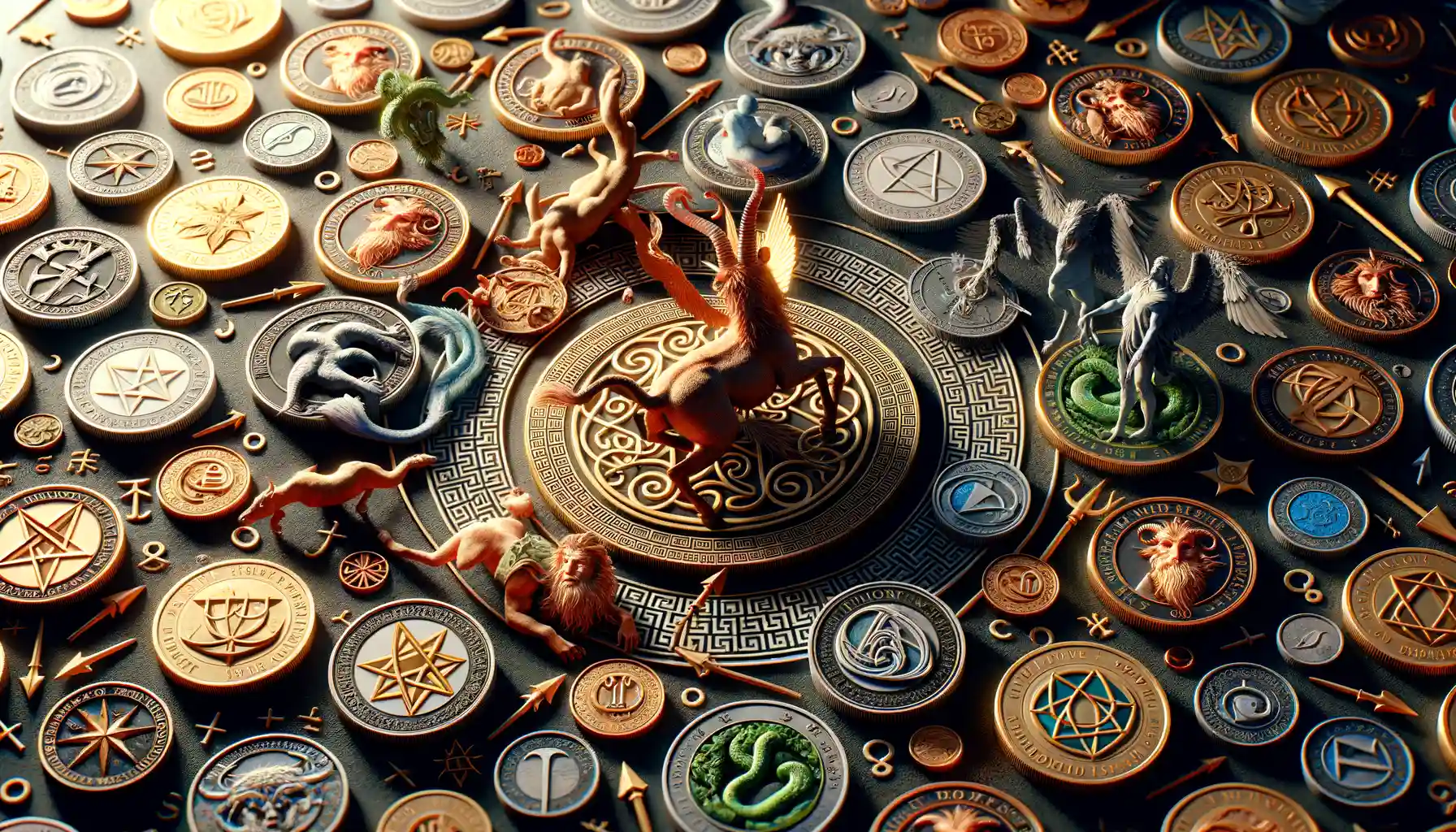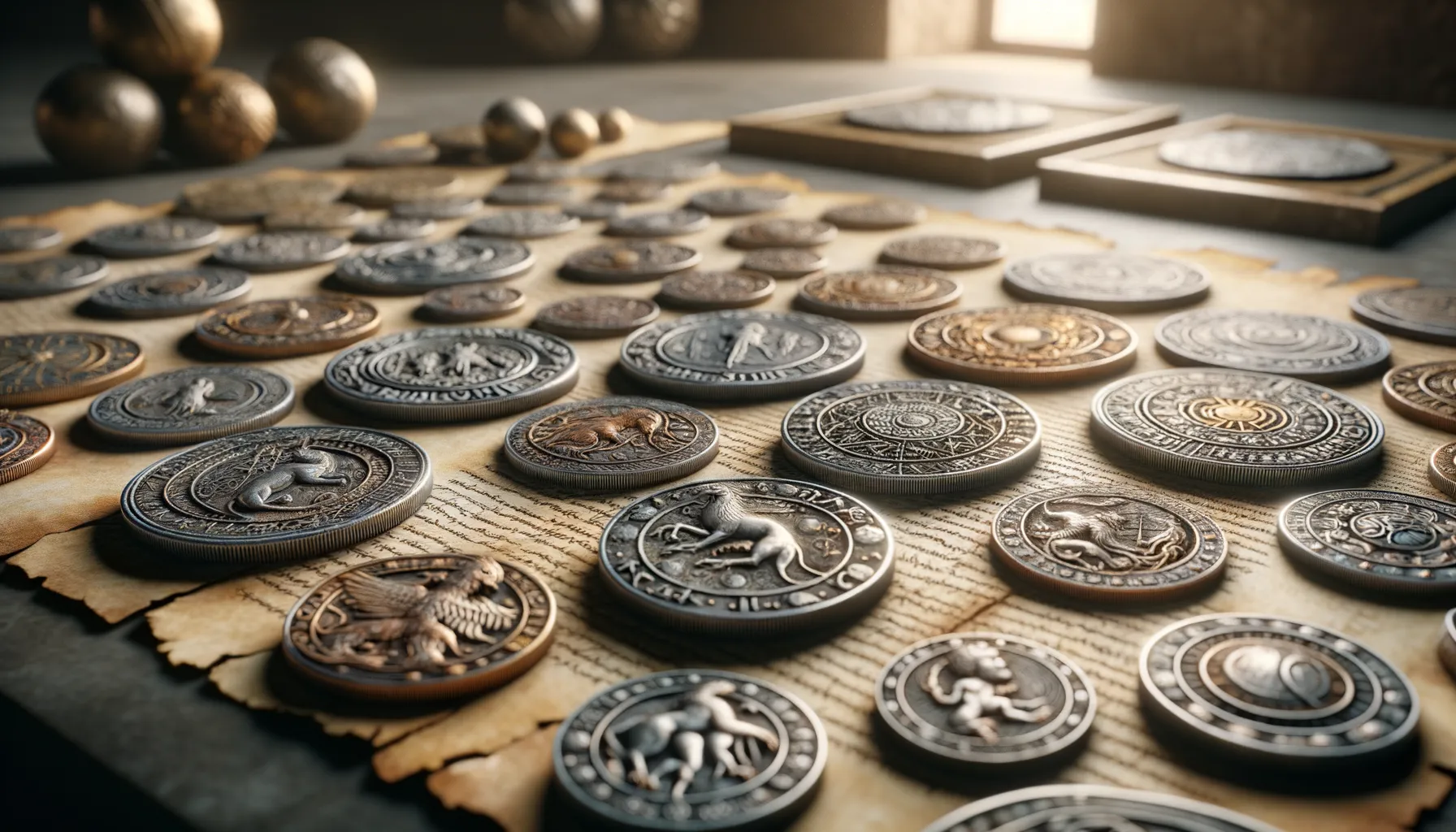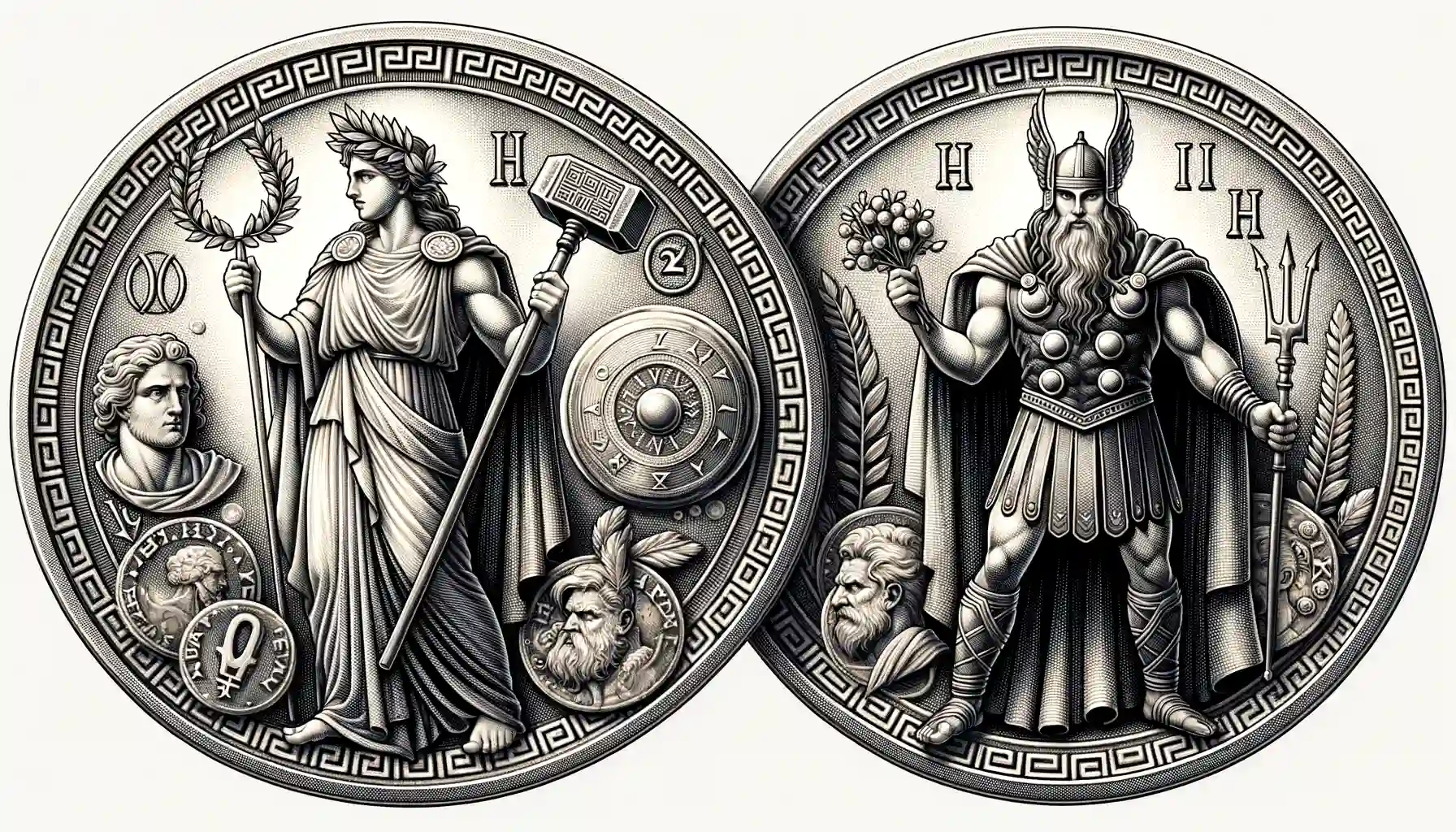Introduction to the Historical Significance of Coins
Coins are not just metal discs; they are tiny, glittering time capsules brimming with stories. It’s astonishing to think that something small enough to slip into your palm once played a monumental role in shaping our civilizations. Behind every coin lies a tale of power, propaganda, and belief—mixing the sacred with the profane, the mythological with the tangible.
Treasures That Bridge Myth and Reality
When you hold an ancient coin, you’re not just holding currency; you’re clutching an artifact that bridged the divine and the earthly. Imagine an emperor stamping his face alongside gods like Apollo or Athena. Was it just vanity? Hardly. It was a declaration: “I am chosen by the heavens themselves!” Each coin became a miniature billboard showcasing both leadership and lineage.
- Coins depicting gods signified divine favor and legitimacy.
- Heroes like Heracles symbolized courage and triumph.
- Animals—think lions or eagles—reflected guardian spirits or fierce protectors.
These weren’t just pocket change; they were symbols of faith and power circulated from hand to hand, carrying myths into marketplaces and beyond.
Shaping Identity, One Coin at a Time
The artistry of coins wasn’t random; it was exquisitely purposeful. Take the intricate engravings of Alexander the Great. The youthful curve of his face on coins didn’t just celebrate his conquests—it connected him to the semi-divine hero Achilles and even Zeus-Ammon, reminding everyone he wasn’t just a man but a legend. Coins became a visual language, speaking to those who couldn’t read, whispering tales of heroism and divinity across ages.
So, the next time you see an ancient coin, don’t just see its shimmer—listen to its story. Coins were storytellers long before books existed, weaving together myths, empires, and eras in a way that still leaves us spellbound today.
Coins as Symbols in Mythological Narratives

The Hidden Language of Coins in Ancient Legends
Ever wondered how a humble coin could hold the weight of an entire myth? In ancient tales, coins often transcended their role as currency, transforming into potent symbols of fate, power, and even divine intervention. These shimmering artifacts whispered stories in the language of gods and mortals alike.
Take, for instance, the legend of the ferryman Charon. In Greek mythology, a single coin—often placed under the tongue of the deceased—ensured passage across the River Styx. Without it, a soul would wander restlessly between worlds. A mere disc of metal became the key to eternal peace or torment. Goosebumps, right?
But coins weren’t just tools for crossing rivers of death; they were markers of destiny and cosmic favor. Consider the Roman tradition of casting a coin into water—this wasn’t some quaint superstition but a deeply symbolic act. The coin was a plea to gods like Neptune for safe travels or peaceful seas.
- They could symbolize tribute—offered to gods in gratitude or reverence.
- Or reflect betrayal, as in the infamous thirty silver coins tied to Judas.
In these narratives, coins weren’t lifeless objects. They were alive, buzzing with meaning.
Religious and Cultural Aspects of Coins in Ancient Societies

The Spiritual Aura of Ancient Currency
Close your eyes for a moment and picture holding an ancient coin in your hand. It’s not just cold metal; it’s a piece of a world where religion and daily life were intertwined. To societies like the Greeks, Romans, and Egyptians, coins weren’t just monetary tools—they were objects steeped in sacred meaning. Imagine carrying a small talisman of the gods in your pocket!
Coins often bore the images of deities like Athena, protector of Athens, or Isis, the Egyptian goddess of magic. These weren’t random choices; they reflected beliefs, hopes, and even a little superstition. People saw these coins as lucky charms, invoking divine favor or warding off misfortune. A coin wasn’t just an item—it was a connection to the divine.
- Ritual Offerings: Coins were placed in temples as gifts to the gods, a tangible way to show devotion.
- Burial Practices: In many cultures, coins accompanied the dead, thought to serve as payment for safe passage to the afterlife (think Charon’s obol in Greek mythology).
It’s fascinating how something so seemingly mundane could carry such weighty meanings, don’t you think?
Famous Mythological Figures and Their Depiction on Coins

Immortal Legends Cast in Precious Metal
Imagine holding a coin that feels like a time machine—etched into its surface is not just a face, but an entire story. Ancient coins often bore the visages of mythological figures, transforming these small, everyday objects into miniature museums of legend. Take the Macedonian tetradrachms, for instance. Glistening under sunlight, they showcased the powerful profile of Alexander the Great, merged with the identity of Heracles, the demigod known for his unfathomable strength. Wearing the lion-skin headdress? That wasn’t just decoration—it was a silent roar of might.
But let’s turn our eyes to the Romans. Coins featuring Venus, the goddess of love, balanced delicacy and divinity with stunning precision. Her image symbolized not just beauty but the favor of the gods, a wink from eternity in your pocket.
- Athena: Found on Athenian tetradrachms, her piercing gaze and helmet spoke of wisdom and wartime strategy.
- Helios: The sun god, radiant on Rhodes’ coins, his face framed by fiery rays.
Each coin whispered myths to its holder, carrying tales through time as reliably as the stars themselves.
Impact of Mythological Coins on Modern Understanding of History

How Ancient Coins Whisper Stories of the Past
Imagine holding a small, weathered coin in your hand. It’s not just metal—it’s a time capsule. These mythological coins, adorned with gods, heroes, and legendary creatures, transport us to worlds long gone but never forgotten. Every scratch on their surface feels like a secret waiting to be uncovered.
Take, for instance, coins depicting Athena of ancient Greece. Her stern gaze and helmeted figure don’t just symbolize wisdom; they tell us about a time when cities were built around temples, wars were fought in the gods’ names, and currency itself was imbued with divine power. One glance at these coins, and you’re no longer in 2023—you’re standing in a bustling agora where philosophers discuss life’s great mysteries.
- They confirm details of historical events: like Alexander the Great’s campaigns immortalized on coins bearing Hercules’ image.
- They reveal cultural values: such as Rome’s obsession with power, seen in depictions of Mars, the god of war.
- They carry myths forward: letting us see how ancient people intertwined their beliefs with daily life.
These coins are more than artifacts—they are storytellers, each one singing a unique and often unexpected tune.